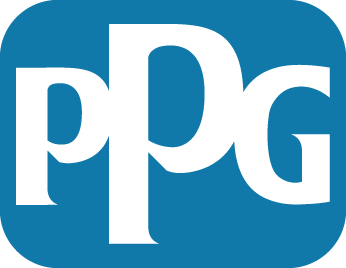PPG is a Pittsburgh based Fortune 500 company and a global supplier of coatings, optical products, glass, fiberglass speciality materials and paint. PPG is a large multinational company with over 47,000 employees worldwide, operating with over 150 manufacturing locations spread across all continents. PPG strives to develop innovative products to meet future needs, deliver consistent sales and earnings growth and achieve superior shareholder returns.
PPG operates in three main segments and produces a wide variety of products. Throughout these segments, PPG is creating value by using its strong distribution channels in order to meet the needs of the customers. Additionally, PPG produces highly innovative and specialized products. They won several prestigious R&D 100 Awards for the development of innovative technologies (PPG Inc., 2016). By creating these values, PPG developed a strong brand reputation and, thereby, consistent financial performance during the years. PPG improved net sales from continuing operations with $15,33 billion in 2015 compared to $14,27 billion in 2013 (PPG Annual Report 2015).
Project management at PPG is largely shaped by the project portfolio management. The aim of the project portfolio management is selecting projects for execution based on strategic fit and to allocate resources. PPG has various projects running with different aimed benefits and costs. Most ideas stem from employees within the department. The employee contacts his direct supervisor, and together they look at the opportunities the project has. Thereafter, the project is placed in an Excel file, which is updated monthly, showing the key aspects of the project.
The communication between the employees is based on traditional communication channels. First of all, the employees are using Webmail as communication tool, to stay connected with each other. The important information is being discussed by sending e-mails to colleagues. At high necessity, it is possible for employees of PPG to use the phone to share urgent information. Unfortunately, this is not always possible due to the time differences. Moreover, SharePoint is being used as a platform in order to share Excel and PowerPoint files within the organization. Several problems arise using these systems. For example, management does not always know to what extent the project is performing. Additionally, the project leader does not always provide updates.
To solve this problem, we strongly suggest to further digitalise project management and execution by implementing a cloud-based Project Management Information System (PMIS). This system will provide both management and workers with real-time information such as scheduling, budget management, task assignment, quality control, documentation and collaborative tools. The main purpose of the PMIS is to boost efficiency by making the development cycle more visible. Specific tasks could be tracked, and, thereby, all stakeholders can have a better understanding of the project’s process. In addition, the PMIS will also function as a platform for communication and collaboration. This will enable the organization to unlock additional value by streamlining and improving interactions. This change could improve the productivity and interaction of workers by 20 to 25 percent (McKinsey, 2012).
Group 22

